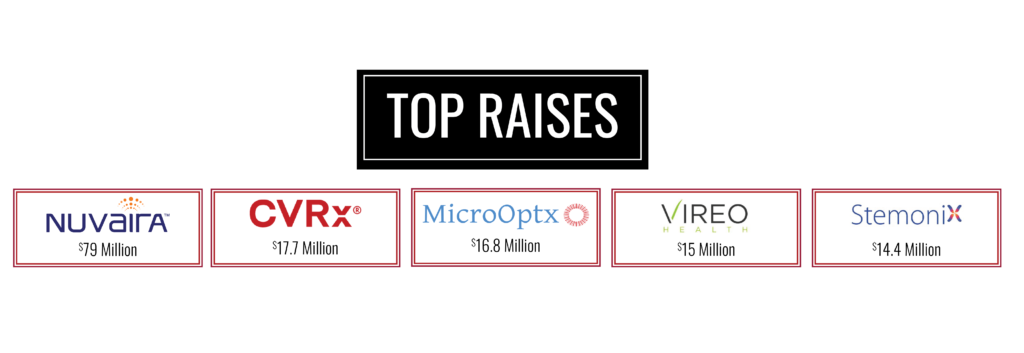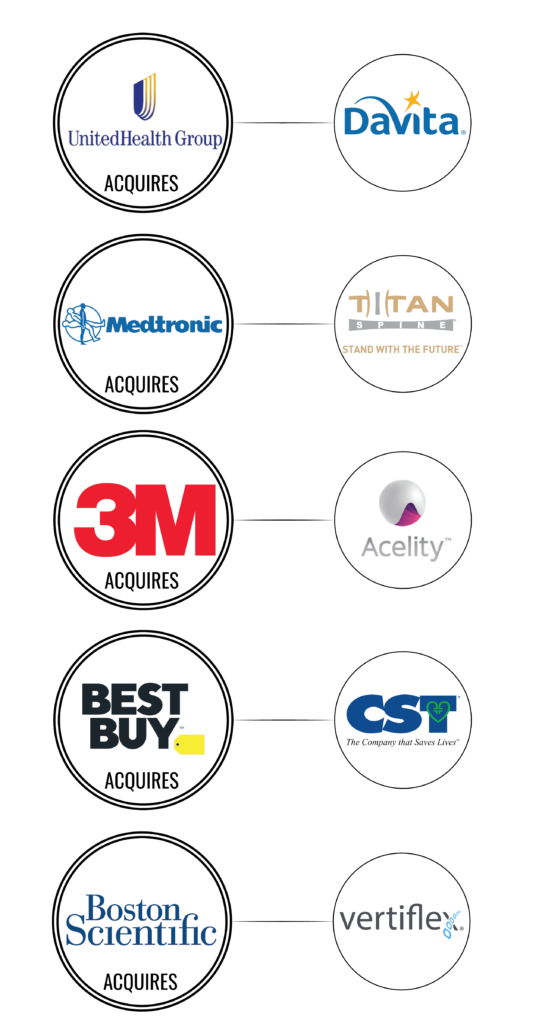Three Key Takeaways:
- M&A activity is strong in Medical Alley, with over $15 billion spent in the second quarter alone, as companies large and small look for paths to growth
- Medical Alley startups brought in $261.6 million dollars in the first half of the year, their second-best mark in the last five years
- Signs point to an active third quarter, particularly for angel- and seed-stage companies
Investors backed Medical Alley companies at a near-record pace to start 2019, pumping over $260 million into Minnesota’s early-stage ecosystem in the first six months of the year to drive new solutions to healthcare’s biggest problems. But investors weren’t the only group finding value in Medical Alley’s healthcare innovations: Some of the biggest names in the region made sizable acquisitions, spending more than $15 billion in the second quarter alone to acquire new technologies and solutions.

Investors Look to Medical Alley for Help with Hearts and Heads
For companies receiving investment in Q2, the median raise was $1.7 million — a five-year best for the second quarter — with two medical device companies, CVRx and MicroOptx Medical, leading the way. For the first half generally, medical device startups also attracted the most interest of any healthcare sector in Medical Alley, raising over $186 million in six months, with an average raise just shy of $10 million. Of notable interest to investors were companies focused on cardiovascular health, particularly those treating heart failure, one of the most common causes of death in the United States.
Big data and health IT companies drew strong interest from investors, a trend that will likely continue because of the increasing capabilities of machine learning/AI and the proliferation of data in both volume and scope. The outlook for companies that can show demonstrable improvement in getting actionable information out of the data lake and to clinicians in a timely manner is going to improve rapidly as the size of those lakes increase.
Legislative Gains Should Lead to Monetary Gains for Startups
There was something of a downturn in the number of companies raising money in the second quarter of the year, due in part to companies and investors awaiting the outcome of a key legislative effort in Minnesota to reinstate the Angel Tax Credit Program. Thanks to the work of legislators and advocates like the Medical Alley Association the Angel Tax Credit Program was successfully reinstated this year.
Companies, including many that would have otherwise raised rounds in Q2, can take advantage of the reinstatement as of July 1 and complete their raises. Accordingly, we expect to see an active third quarter with more companies raising, particularly at lower dollar amounts. Throughout the last five years, Medical Alley has proven to be a strong ecosystem at all levels and the reinstatement of the ATCP will help ensure that new growth continues to rise up.
Genial Takeovers
With increased state support of the entrepreneurial community from the Walz Administration and the creation of Launch Minnesota, Medical Alley is an even better place to found a healthcare company than it already was. Medical Alley has also become an increasingly good place to find an exit as well. For example, in 2018, Boston Scientific bought nearly a company per month — including several from their Medical Alley backyard — to help reach their goal of having 75 new products on the market by 2022. UnitedHealth Group, following an agreement with regulators that allowed their long-awaited acquisition of DaVita to go through, acquired two other companies, driving their acquisition total in the second quarter to more than $7.5 billion.

All told, Medical Alley Association Foundational and Sustaining Members spent more than $15 billion acquiring companies in Q2 alone and, given that the trend of consolidation in healthcare seems likely to continue, there is plenty of upside left for innovative companies that see acquisition as their path to exit rather than a public offering.
An area to watch in particular is the shrinking space between digital health and medical device products. Companies like Pops! Diabetes Care are already straddling the divide and, as connected products demonstrate increased value, we expect to see larger device companies investing in, and potentially acquiring, data-focused startups that can help them deliver actionable insights to patients or to caregivers quickly and precisely.
With a strong first half in the books and concrete signs of strength at both ends of the startup spectrum, 2019 is shaping up to be another huge year for investable companies in Medical Alley. We expect to have another busy six months ahead of us thanks to improved programs in Minnesota and capital being recycled back to healthcare investors thanks to the uptick in M&A so far this year.
